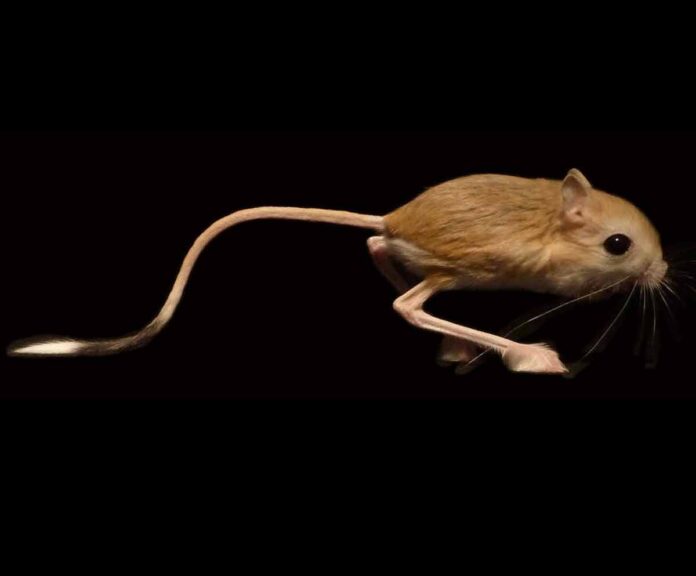Foot bones that are separate in small hopping rodents are fused in their larger cousins, according to a team of researchers from the University of Michigan and the University of California, San Diego.
Once evolution set jerboa bones on the path to fusing together, it appears that they overshot the optimum amount of fusing the structure that best-dissipated stresses from jumping and landing to become fully bonded.
This discovery could help to shape the design of future robotic legs that can withstand the higher forces associated with rapid bursts of agile locomotion.
Jerboas are desert rodents that hop on two legs erratically to avoid predators. These two legs can vary greatly across the jerboa family tree: there are species that weigh only three grammes and those that weigh 400 grammes, with heavier species having vastly different foot bones, or metatarsals. Lighter jerboas are similar to most other mammals, including humans, in that their metatarsal foot bones are separate.
“We wanted to investigate why we only see fused bones in larger jerboas,” said Carla Nathaly Villacs Nez, a U-M doctoral candidate in mechanical engineering and the study’s first author in Proceedings of the Royal Society B.
“We discovered that fused bones had lower stresses than unfused bones, reinforcing against higher loads,” she explained. “However, we discovered that partially fused bones had lower stresses than fully fused bones, suggesting that fully fused jerboas have evolutionary overshoot.”
The researchers used micro-CT scans of museum specimens to create 3D models of the jerboa metatarsals in software, then scaled them to equal sizes and stress-tested them as they hit, flexed, and hopped off a surface.
The smaller jerboas have three distinct metatarsal bones that can support the rodent’s small stature even when used for high-impact jumping. These three bones have completely fused in more recent, larger jerboa species. The intermediate-weight species have a metatarsal with interior bone remnants where it has partially fused together, like a bundle of sticks.
“Our interdisciplinary team used cutting-edge engineering techniques to solve an evolutionary puzzle,” said Talia Moore, a U-M assistant professor of robotics and the study’s senior author.
“Evolution may have reached an advantageous point of partially fused geometry, but evolutionary momentum may have continued to completely fuse the metatarsals; because fully fused bones are still sufficient to keep from breaking, there was likely no evolutionary pressure to stop fusing.”
Similar analyses, according to the researchers, could help uncover other ways in which the skeleton changed shape to compensate as species evolved from quadrupedal to bipedal locomotion.
“While kangaroos, primates, and other rodents converged on bipedalism, the dynamics of their locomotion and the anatomical changes associated with that shift are quite different in each case,” said Andrew Ray, a materials science and engineering undergraduate student in Moore’s lab.
“We could simulate how the foot bones of extinct human ancestors might have experienced stresses during walking, running, or other locomotion using similar analysis.”
Kimberly Cooper, a developmental biology professor at the University of California, San Diego, is a co-author on the paper. She and Moore came up with the idea for the project while researching the evolution and development of metatarsal fusion in jerboas. Cooper’s expertise was critical in understanding the findings’ evolutionary implications.

